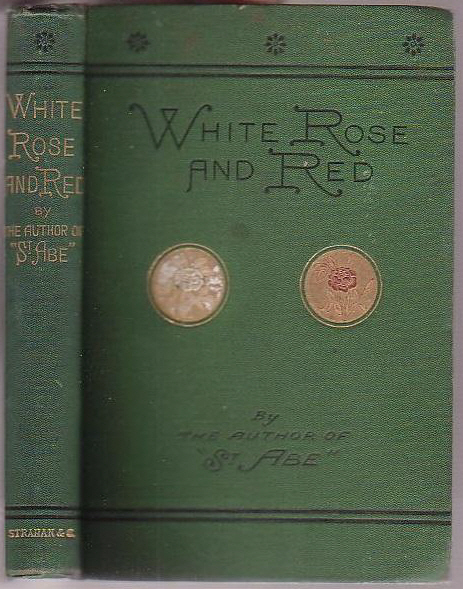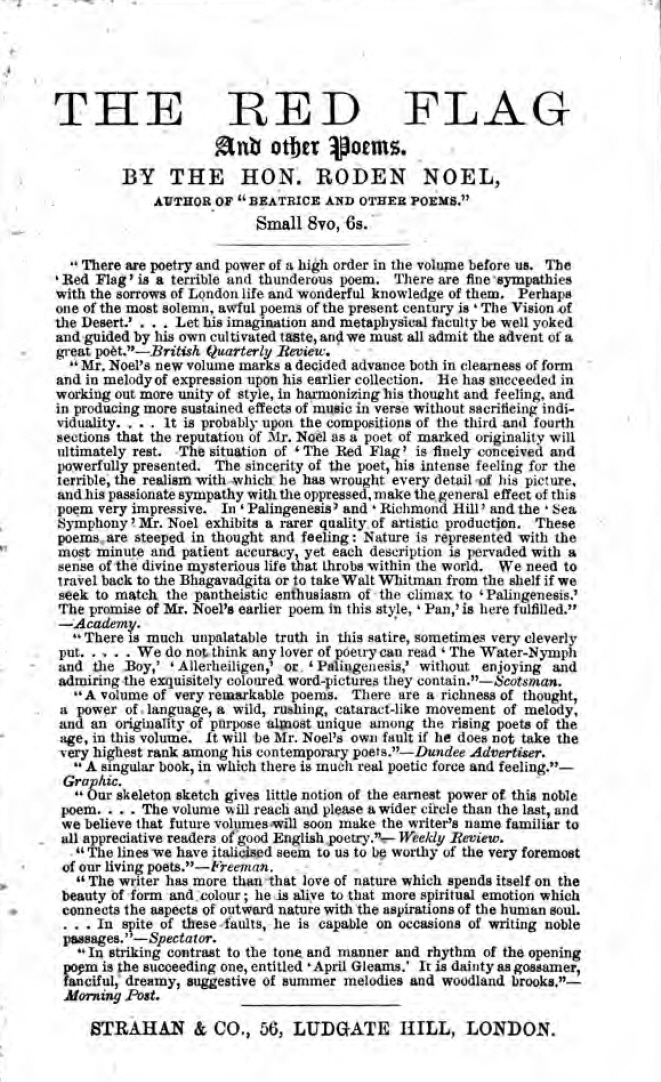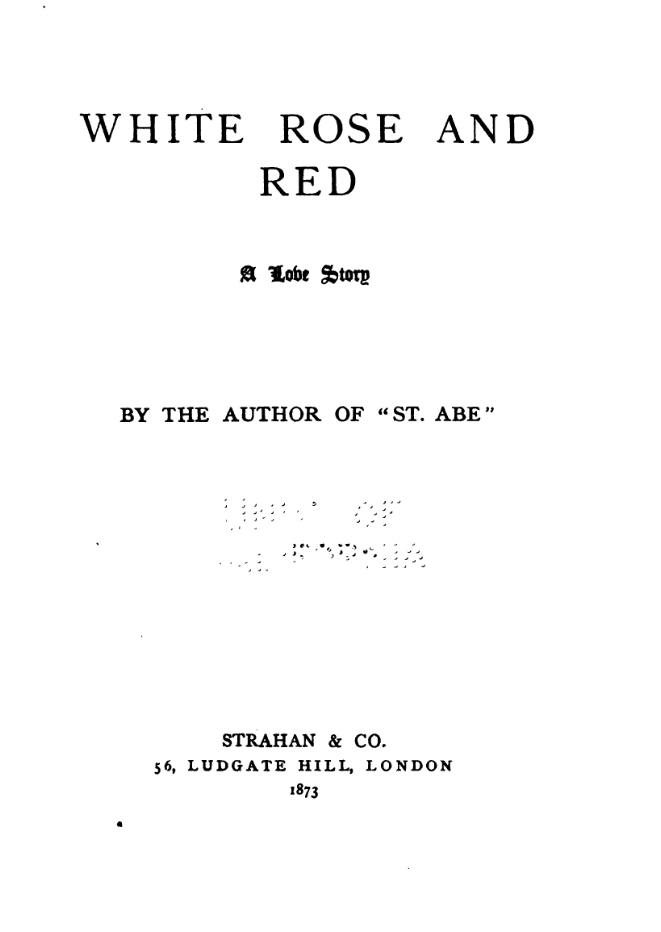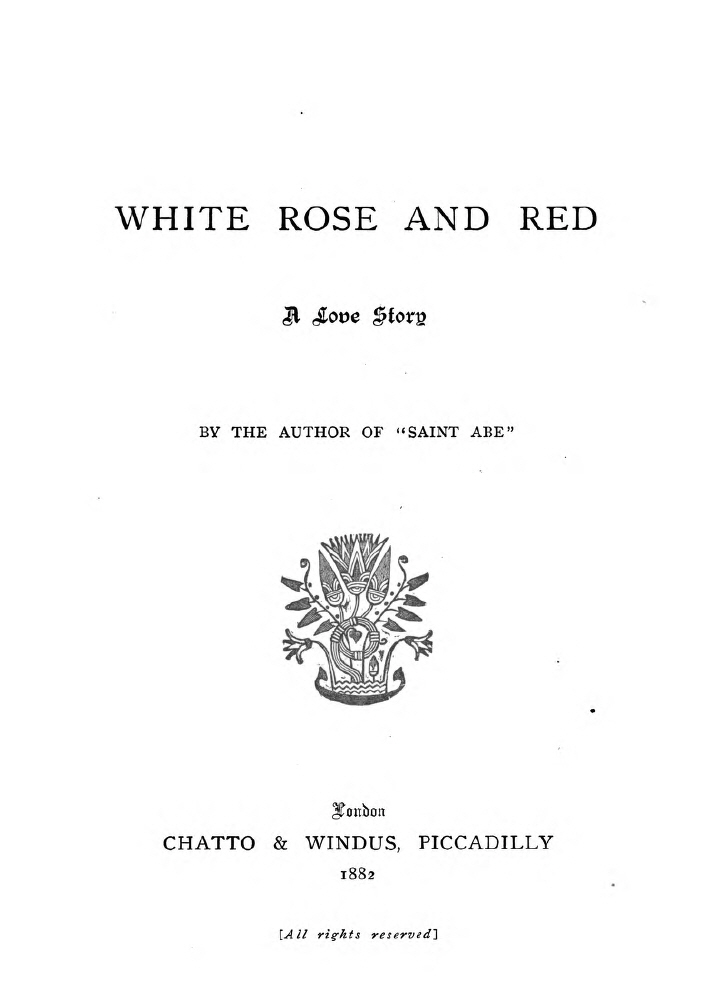ROBERT WILLIAMS BUCHANAN (1841 - 1901)
|
ROBERT WILLIAMS BUCHANAN (1841 - 1901) |
|
|
|
|
|
|
|
|
WHITE ROSE AND RED |
 |
|||
 |
|||
 |
|||
|
WHITE ROSE AND
A Love Story
BY THE AUTHOR OF “ST. ABE”
STRAHAN & CO. _____
LONDON: _____
TO WALT WHITMAN AND ALEXANDER GARDINER, WITH ALL FRIENDS IN WASHINGTON, I dedicate THIS POEM. _____
PAGE
PART I.—THE CAPTURE OF EUREKA HART. 1. NATURA NATURANS 3 1. ERYCINA RIDENS 53 1. DROWSIETOWN 97 1. THE GREAT SNOW 141 EPILOGUE 239 NOTES 243 _____
[Notes: White Rose and Red was published, anonymously, in August 1873, following on from the success of St. Abe and His Seven Wives, which appeared at the beginning of December 1871, at the height of the ‘Fleshly School’ controversy. Reviews of White Rose and Red in American newspapers mentioned rumours that Buchanan was its author, and there is a letter from Buchanan to John Chapman, the publisher of The Westminster Review, the tone of which seems to suggest that Buchanan had no intention at this point of revealing his authorship. By the time George Barnett Smith wrote his puff piece on Buchanan for the Contemporary Review in November 1873, the secret was out, but when Chatto and Windus reprinted White Rose and Red in 1882, Buchanan’s name was still omitted on the title page. |
 |
|
When Buchanan set up in business as his own publisher in February 1896 he republished St. Abe under his own name, but not White Rose and Red. In the Bibliographical Note to the new edition of St. Abe, he does say that “it will be followed by a cheap edition of White Rose and Red” but the book was not mentioned in his list of forthcoming titles. Perhaps he dropped his plan for a new edition because he had returned to the theme of the ‘civilised’ man falling in love with the free-spirited native girl in The Outcast, originally issued by Chatto & Windus in 1891, but reprinted by Buchanan in 1896. And this repetition might also explain why he chose not to include ‘John Mardon, Mariner’ (originally published in The Saint Paul’s Magazine in 1872, as another work by ‘the author of “St. Abe”’) in the Poetical Works of 1884. As to the inspiration for this theme, Herman Melville’s Typee is one candidate, however, a letter to Professor Blackie of 14th October, 1871 might indicate another. Buchanan thanks Prof. Blackie for lending him a copy of Joaquin Miller’s poems (presumably Songs of the Sierras, published in 1871). Buchanan dismisses the poems as follows: ‘Miller’s poems come fresh in these days, with their Byronic echoes, but they are without depth or real power. Note for example the lame device in the first poem, & contrast it with the same situation at the end of Tennyson’s “Brook.” Neither as to the sentiment nor the psychology will the poems bear criticism. But they rattle along, and they are picturesque—actual merits in poems of this class; and they will be popular with young ladies and generally with people destitute of real imagination.’ It would be wrong to place too much emphasis on the chance survival of a letter to claim that Joaquin Miller was the inspiration for Buchanan’s scheme to adopt an American persona. Buchanan had many other American models to choose from and there was a mention of St. Abe in Strahan’s advert in The Daily News as early as 30th October, 1871. However, it would be remiss to ignore as a possible inspiration for Buchanan’s second ‘American’ work, Miller’s ‘The Tale of the Tall Alcalde’ (from Songs of the Sierras) which does contain some similarities with White Rose and Red. Although it received positive reviews, White Rose and Red did not emulate the popular success, or the sales of St. Abe, perhaps due to the revelation of its true authorship. And there was another unforeseen consequence when the book was used in ‘Fleshly School’ libel trial of 1876 to show that Buchanan himself was a ‘fleshly’ poet.] _____
Back to Poetry
|
|
|
|
|
|
|